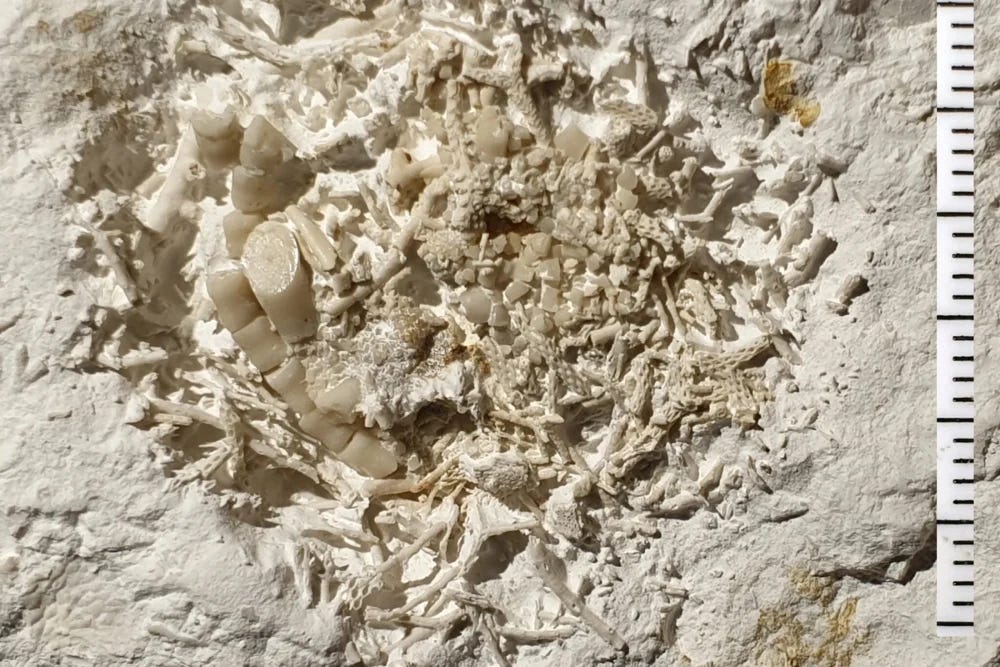66-Million-Year-Old Fossilized Vomit Unearthed in Denmark
The rare find, discovered at Stevns Klint, offers insight into ancient predator-prey relationships.
A truly bizarre and remarkable discovery has been made in Denmark — a 66-million-year-old vomit fossil.
The rare specimen, known as Danekræ DK-1295, was uncovered by local fossil enthusiast Peter Bennicke at Stevns Klint, a coastal region on the eastern edge of Denmark. "Danekræ" refers to rare, significant fossils in Denmark, which must be evaluated by the national Danekræ committee of the Natural History Museum of Denmark before they receive official recognition, according to the University of Copenhagen and the museum.
Bennicke stumbled upon the unusual find while examining a collection of sea lily fragments embedded in chalk. He brought the fossil to Geomuseum Faxe in November for further examination, where museum curator Jesper Milàn and Dutch sea lily expert John Jagt analyzed the specimen. It was determined that the clump contained remains from at least two species of sea lilies, the museum reports.
Fossilized vomit, or regurgitalites, are an uncommon but valuable discovery for scientists studying ancient ecosystems. These fossils provide insights into ancient food chains and predator-prey interactions millions of years ago.
Milàn suggested that a Cretaceous-era predator, likely a fish, had consumed the sea lilies and later expelled the indigestible parts. “This is a very rare find. Sea lilies aren’t a particularly nutritious food source, as they consist mainly of calcareous plates with very few soft tissues,” Milàn explained in a news release from Østsjællands Museum.
The extraordinary relic offers a glimpse into the prehistoric feeding habits of ancient creatures and is currently on display as part of a special exhibition at Geomuseum Faxe, where visitors can witness this unique snapshot of ancient life.


